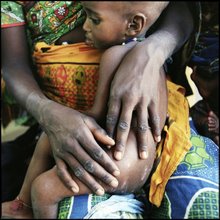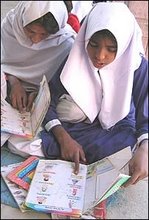PREAMBLE: In this issue we extract a report recently distributed by the Pan American Health Organization, PAHO/WHO, as part of their effort to disseminate information on contemporary public health issues. This refers to work jointly published in the Lancet by Harvard University, Boston and the University of Washington, Seattle, which reveals that investment in the non-government sector may result in more favourable health spending by government than by investing directly in the government sector itself.
Specifically, the study reported below found that debt relief, and development assistance for health (DAH) to government had a negative and significant effect on domestic government spending on health such that for every US$1 of DAH to government, government health expenditures from domestic resources were reduced by $0•43 (p=0) to $1•14.
However, debt relief, and development assistance for health DAH to the non-governmental sector had a positive and significant effect on domestic government health spending.
A counterpoint, implying that full understanding requires further examination, as explanations may vary widely depending on the situation of individual countries, is offered by another set of authors, whose comments are also extracted below.
Our topic choice for this issue is based on recognition that the findings of this Gates Foundation supported study have potentially major implications for donor funding. While there is a need to examine the findings further, especially in light of individual country situations, major questions about aid effectiveness emerge.
REPORT ON PUBLISHED ARTICLE - Public financing of health in developing countries: a cross-national systematic analysis
“…….Government spending on health from domestic sources is an important indicator of a government's commitment to the health of its people, and is essential for the sustainability of health programmes. We aimed to systematically analyse all data sources available for government spending on health in developing countries; describe trends in public financing of health; and test the extent to which they were related to changes in gross domestic product (GDP), government size, HIV prevalence, debt relief, and development assistance for health (DAH) to governmental and non-governmental sectors.
Methods
… a systematic analysis of all data sources available for government expenditures on health as agent (GHE-A) in developing countries, including government reports and databases from WHO and the International Monetary Fund (IMF). GHE-A consists of domestically and externally financed public health expenditures. We assessed the quality of these sources and used multiple imputation to generate a complete sequence of GHE-A. With these data and those for debt relief, and development assistance for health DAH to governments, we estimated government spending on health from domestic sources. We used panel-regression methods to estimate the association between government domestic spending on health and GDP, government size, HIV prevalence, debt relief, and DAH disbursed to governmental and non-governmental sectors. We tested the robustness of our conclusions using various models and subsets of countries.
Findings
In all developing countries, public financing of health in constant US$ from domestic sources increased by nearly 100% (IMF 120%; WHO 88%) from 1995 to 2006. Overall, this increase was the product of rising GDP, slight decreases in the share of GDP spent by government, and increases in the share of government spending on health. At the country level, while shares of government expenditures to health increased in many regions, they decreased in many sub-Saharan African countries. The statistical analysis showed that debt relief, and development assistance for health DAH to government had a negative and significant effect on domestic government spending on health such that for every US$1 of DAH to government, government health expenditures from domestic resources were reduced by $0•43 (p=0) to $1•14 (p=0).
However, debt relief, and development assistance for health DAH to the non-governmental sector had a positive and significant effect on domestic government health spending. Both results were robust to multiple specifications and subset analyses. Other factors, such as debt relief, had no detectable effect on domestic government health spending.
Interpretation
To address the negative effect of debt relief, and development assistance for health DAH on domestic government health spending, we recommend strong standardised monitoring of government health expenditures and government spending in other health-related sectors; establishment of collaborative targets to maintain or increase the share of government expenditures going to health; investment in the capacity of developing countries to effectively receive and use DAH; careful assessment of the risks and benefits of expanded DAH to non-governmental sectors; and investigation of the use of global price subsidies or product transfers as mechanisms for debt relief, and development assistance for health DAH.
Funding
Bill & Melinda Gates Foundation…..”
Source and Reference: Lu C, Schneider MT, Gubbins P, Leach-Kemon K, Jamison D, Murray CJL. Lancet 2010; published online April 8. 2010 - DOI:10.1016/S0140-6736(10)60233-4 Website: http://www.thelancet.com/journals/lancet/article/PIIS0140-6736%2810%2960233-4/fulltext#
THE FOLLOWING COUNTERPOINT WAS ALSO PUBLISHED BY ANOTHER GROUP, IN COMMENTING ON THE ABOVE REPORT
VIEWPOINT: Crowding out: are relations between international health aid and government health funding too complex to be captured in averages only?
“…..In today’s Lancet, Lu and colleagues show that for every dollar of international health aid provided to governments, government health funding falls by US$0•43–1•14. Irrespective of whether this outcome is named fungibility or crowding out, mean estimates from many countries suggest a pattern. Without questioning the mean findings of today’s study, we argue that explicit policy choices are behind crowding-out effects, unfolding very differently dependent on the individual countries’ situations. To try to understand why some countries make these choices that result in crowding-out effects, and not only whether they do, is of importance…..”
Source and Reference: Ooms G, Decoster K, Miti K, Rens S, Van Leemput L, Vermeiren P, Van Damme W. www.thelancet.com Published online April 9, 2010 DOI:10.1016/S0140-6736(10)60207-3
URL: http://www.thelancet.com/journals/lancet/article/PIIS0140-6736(10)60207-3/fulltext
FROM a Great Canadian and World Statesman
"A great gulf... has... opened between man's material advance and his social and moral progress, a gulf in which he may one day be lost if it is not closed or narrowed..."
Lester B Pearson
http://nobelprize.org/nobel_prizes/peace/laureates/1957/pearson-lecture.html
Thursday, 15 April 2010
DEVELOPMENT ASSISTANCE FOR HEALTH – NEW IMPLICATIONS ABOUT COMPARATIVE AID EFFECTIVENESS OF GOVERNMENT VS NON-GOVERNMENTAL FUNDING
INSPIRATIONAL WELCOME ............................... from T.S.Eliot's "Little Gidding"
If you came this way From the place you would come from... It would be the same at the end of the journey...
If you came, not knowing what you came for, It would be the same... And what you thought you came for Is only a shell, a husk of meaning... From which the purpose breaks only when it is fulfilled If at all.


























